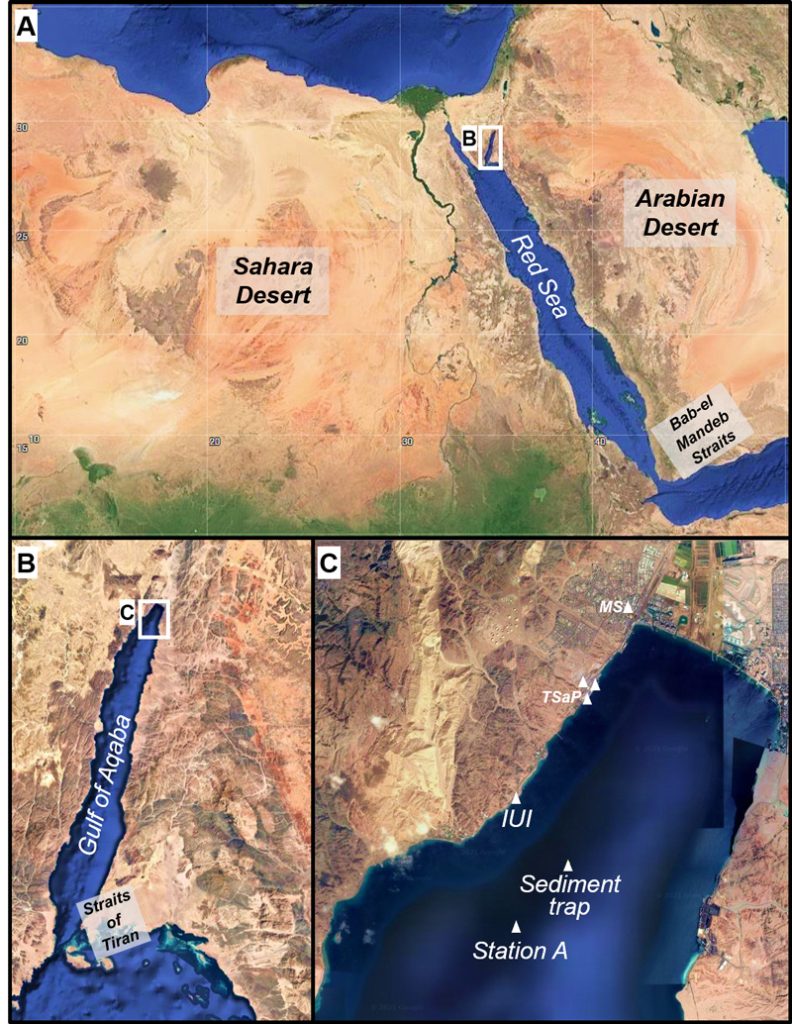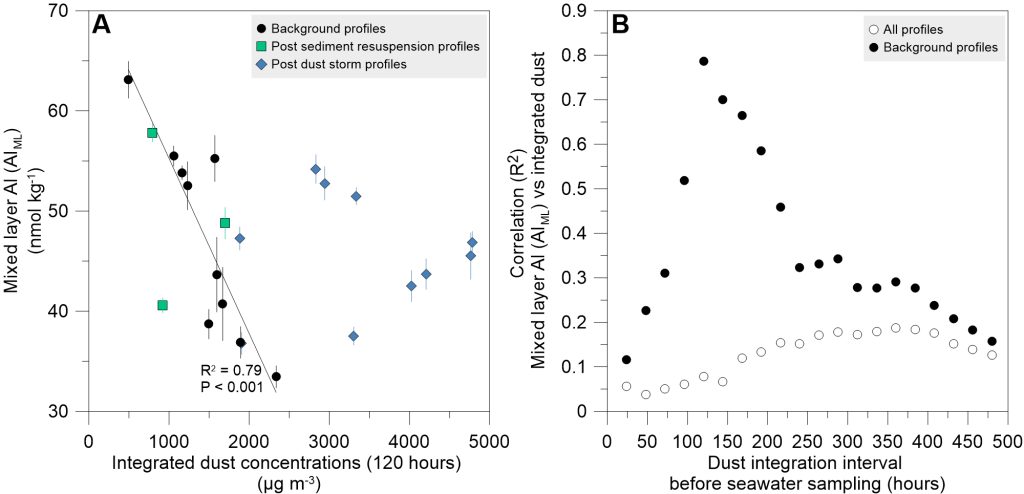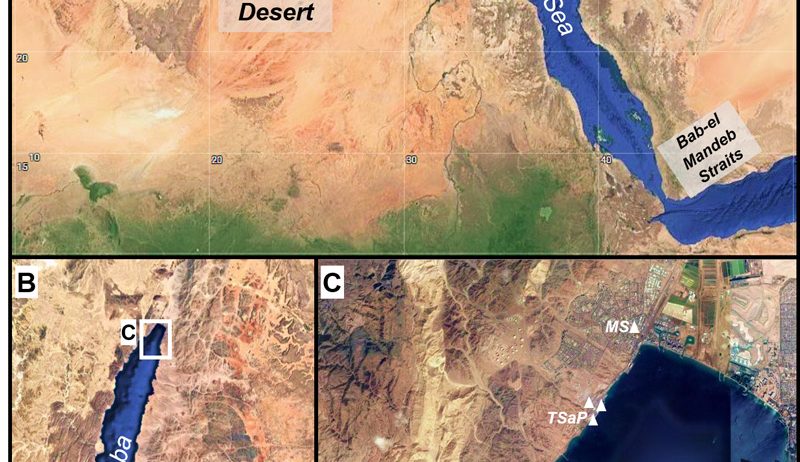Tracing dust deposition with aluminium and silicate at a resolution never reached before
Benaltabet and his colleagues (2022, see reference below) propose a study of the dissolved aluminium (Al) and silicate (Si) fate in the Gulf of Aqaba (Red Sea), with a temporal sampling resolution never achieved before. They focus on daily time scale dust storms, episodes of sediment resuspension and rain events, to quantitatively describe the in situ short- and long- term impact of such environmental perturbations on water column Al and Si inventories. Surprisingly, their data show that when the aerosol loads are intense the mixed layer Al (AlML) inventories decrease due to Al adsorption (scavenging) onto dust particles. This effect is intensified by dust storms, which cause scavenging rates to surpass dissolution rates resulting in the abrupt decrease in AlML. When the storm stops, Al scavenging rates increase linearly with increasing theoretical dissolution rates. The authors also presented important insights on the use of Al as a dust deposition tracer, by testing it in an extreme environment of atmospheric dust. Dissolved Al and Si concentrations ranged between 22 and 91 nmol kg-1 and 0.6 and 3.2 µmol kg-1, respectively. These two elements correlated at depth but decoupled in the upper water column.
The authors also show that a sediment resuspension event triggered a decrease of 34 % in the Al water column inventory, while the soluble Al flux from mineral dust is multiplied by a factor of 11 under wet deposition conditions.


Reference:
Benaltabet, T., Lapid, G., & Torfstein, A. (2022). Dissolved aluminium dynamics in response to dust storms, wet deposition, and sediment resuspension in the Gulf of Aqaba, northern Red Sea. Geochimica et Cosmochimica Acta, 335, 137–154. Access the paper: 10.1016/j.gca.2022.08.029

